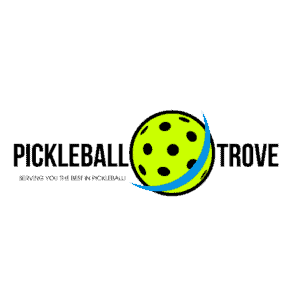
For those who are new to the world of pickleball, the array of Pickleball Terminology can seem like a baffling lexicon. This sport, which has seen an uptick in popularity over the years, combines elements of tennis, badminton, and table tennis. It’s no surprise, then, that its lingo is just as diverse. To help you navigate the court and the conversation around this paddle sport, we’ve compiled a list of essential pickleball terminologies and their definitions.
1. Ace: A serve that is not returned by the opposing player. This usually earns the server a point.
2. Backhand: A type of stroke where the player swings the paddle across their body with the back of the hand leading.
3. Baseline: The line at the back of the pickleball court.
4. Banger: A player who predominantly smashes or drives the ball hard, with little or no intention of using softer shots.
5. Dink: A soft shot that is made with the intention of just clearing the net and dropping into the non-volley zone, usually to keep the opponent at the net.
6. Double-bounce rule: After a serve, each team must play their first shot off the bounce. That means the receiving team cannot volley (or hit the ball out of the air) the serve, and the serving team cannot volley their return.
7. Erne: A shot where the player steps beyond the non-volley zone sideline (but not into the non-volley zone) to hit a volley.
8. Fault: An error that occurs during service or play which results in the server losing their turn.
9. Groundstroke: A shot that is hit after the ball bounces once on the ground.
10. Half-volley: A shot where the player hits the ball immediately after it has bounced.
11. Kitchen: Informal term for the non-volley zone. This is a seven-foot area extending from the net on both sides.
12. Let: A serve that touches the net but still lands in the proper service box. It’s a redo without penalty.
13. Lob: A shot that sends the ball in a high arc, intended to go over the opponent’s head and land near the baseline.
14. Non-volley zone (NVZ): The seven-foot area on both sides of the net, also known as the “kitchen”. Volleys are not permitted in this zone.
15. Overhead smash: A hard, downward shot that is executed from above the player’s head.
16. Paddle: The instrument used to strike the ball. Unlike tennis rackets, paddles are solid, without strings.
17. Poach: When a player moves to hit a ball that would typically be played by their partner.
18. Rally: A sequence of back-and-forth shots between players.
19. Serve: The act of starting a point by striking the ball from behind the baseline into the opponent’s service court.
20. Sideline: The line that runs perpendicular to the net and denotes the outer boundary of the court width-wise.
21. Third shot drop: A strategic shot used by the serving team after the return of serve. It’s a soft shot, designed to drop into the non-volley zone, allowing the serving team to approach the net.
22. Unforced error: A mistake in play (like hitting the ball out of bounds or into the net) that isn’t caused by the opponent’s skill or gameplay.
23. Volley: Hitting the ball before it bounces on the ground. Remember, this is not allowed when you’re standing in the non-volley zone!
24. Dead ball: A ball that is out of play.
25. Rally scoring: A scoring method where a point can be won by the serving or receiving team.
26. Server number: Used in doubles to denote which server is serving. Players will either be “server one” or “server two.”
27. Stack: A strategy used in doubles where both players stand on the same side of the court during the serve to take advantage of one player’s strong forehand or backhand.
28. Transition zone: The area between the baseline and the non-volley zone where players often find themselves as they move forward or backward on the court.
In conclusion, understanding the terminology of pickleball can significantly enhance your enjoyment and performance in the game. Just like mastering the sport’s skills, familiarizing yourself with its unique lexicon is crucial. Whether you’re a seasoned player or a newbie, we hope this guide serves as a handy reference to the exciting world of pickleball. Keep practicing, and remember to always have fun on the court!

